The West Country panorama with a gruesome story and views from 'the top of the world'
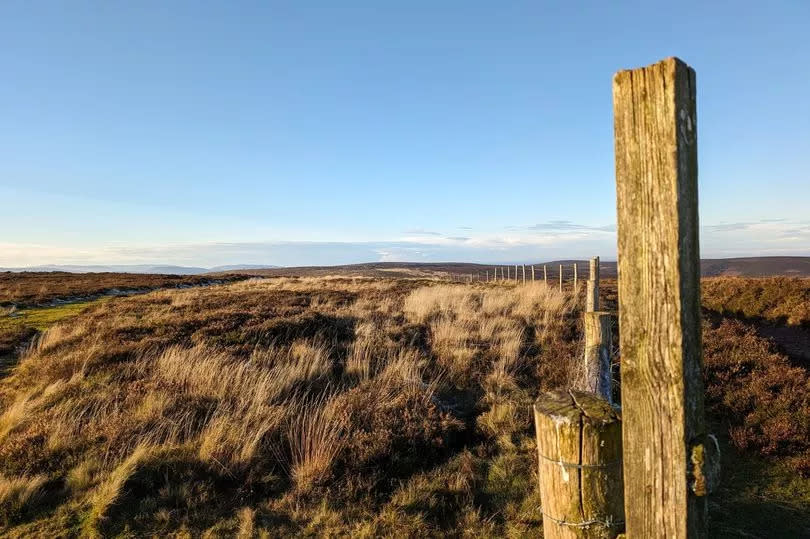
There are times when it’s a good idea to climb a mountain in order to get a better view of the world that surrounds you. The right kind of hill will do.
Or a ridge, escarpment or, indeed, any eminence that is capable of giving you an overview of the world in which you live. The point is that being up high can literally lift your spirits and somehow help to put the complexities of life into perspective.
The South West region has a variety of summits which will do the job, but some are better than others when it comes to supplying the drama of that all-round 360-degree panorama.
The ridge of the Quantock Hills is one of the finest I know, and I don’t just say that because I was born under the lee of those wondrous uplands and so have an unquenchable love for their soft contours, but because the views offered by a stroll along those modest summits are better and more extensive that you’d get from many a mountain 10 times their height.
I was saying all this to a friend and editor our sister newspaper the Western Daily Press , Richard Bache, who joined me on a walk along the Quantock’s airy ridge – and I promised him that if the weather was fine he’d be treated to a vast panorama that would contain more than a third of the large geographical area covered by his own newspaper.
An invitation which I imagined sounded pretty impressive, until I told him that we’d meet at a place called Dead Woman’s Ditch. As we were talking on the phone, I do not know if his expression changed to one of slight alarm upon hearing this rather gruesome place name — but he agreed to come along anyway, so must have been convinced it would be a good idea to enjoy those views of just about all of Somerset, as well as glimpses of Gloucestershire, Dorset and even Wiltshire and Worcestershire, not forgetting a large chunk of Devon in the form of the Blackdown Hills and distant Dartmoor. It is said you can see a total of 12 counties from the top of the Quantocks, if you count the ones in Wales on the other side of the Bristol Channel.
As for the gruesomeness of Dead Woman’s Ditch, I also promised Richard I’d tell him all about the swashbuckling tale that goes behind the name. Which, admittedly, was a little disingenuous of me because it was an excuse to plug my novel The Last Broomsquire – a story that has the dead woman in question right at the heart of its narrative.
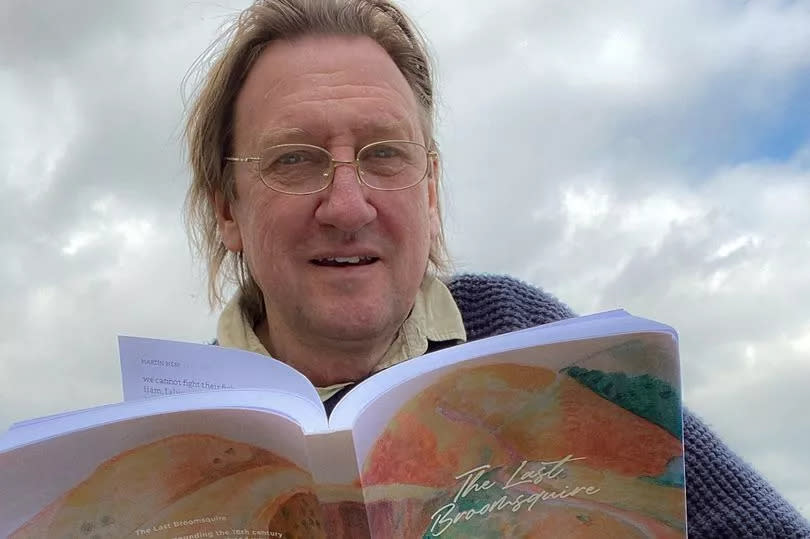
The ditch is actually a prehistoric rampart, erected for defensive purposes to help keep the Bronze Age people safe – but Jane Shorney wasn’t at all safe when she visited the place just over 200 years ago. I’m not sure how close she was to the ditch which is now so indelibly linked with her death – local legend has it that she was murdered here, but some say she went to meet her maker further down the hill. Wherever it was, the grim truth of the matter is that one fateful night Jane flew at her husband, John Walford, in a rage and he felled her with a blow before finishing the job with his knife.
My novel weaves fanciful stories around the character of the young broomsquire Walford, who in real life was a hugely popular man. Broomsquires, by the way, were an itinerant folk who lived on the Quantocks (and elsewhere) and collected broom to make besoms – the sort of brushes favoured by witches. They also worked as charcoal burners, an activity which used to be common in the deep local coombes cloaked in Atlantic oak forest.
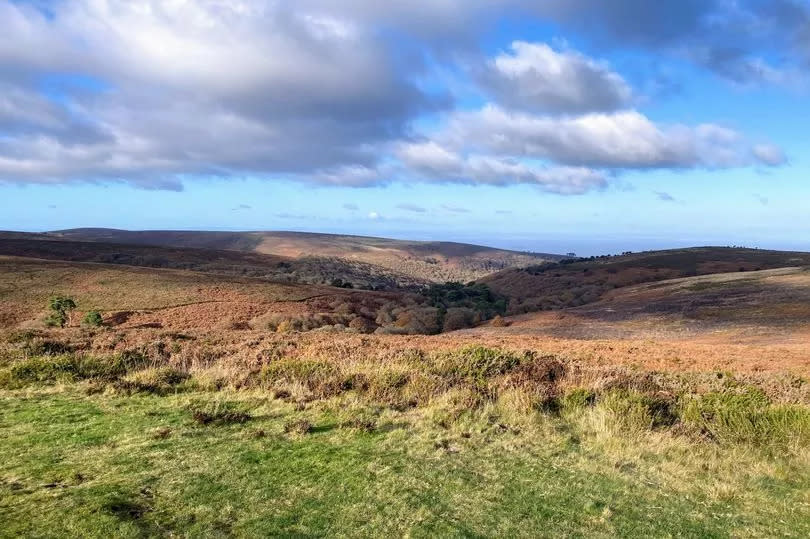
Dead Woman’s Ditch is located in what could be described as the heart of the Quantocks, halfway between the villages of Nether Stowey, to the east of the ridge, and Crowcombe, to the west. I took Richard on a fairly short, almost level (rare in hill country) triangular hike over the top of Robin Upright’s Hill to Halsway Post, before returning over Hurley Beacon and Black Hill to Crowcombe Park Gate, then back to the cars via Wilmott’s Pool.
As I say, the views along the entirety of this easy walk stretch for miles beyond the deep Quantock coombes which extend beneath our route, which themselves add an immediate and stunning intimacy to the landscape.
I was able to show my colleague the twisting, wooded valley that leads down to Holford and Alfoxden where poet William Wordsworth lived for the short while with his sister Dorothy. They moved here at the very end of the 1700s so they could be near fellow poet, Samuel Coleridge, and the three of them would go walking and talking together for miles across these upland heaths – much to the consternation of locals who could not believe anyone would actually walk for pleasure. In those days you would only put one foot in front of the other for work, or to go to church, or market. Strolling for fun seemed so crazy Coleridge and Wordsworth were, for a time, suspected of being French spies.
Last week's Hesp Out West: The coastal gem where 'summer' has arrived but tourists haven't
We were also able to look down at the nearby West Somerset coast, where so much smuggling went on in days of yore, especially at Kilve where the importers of illicit brandy trained their packhorses to walk into the hills alone and to gallop off if anyone said “Whoa!”. Or come to a standstill if anyone barked “Giddy-up!”. A tactic which is said to have frustrated the customs and excisemen on more than one occasion.
Up on Hurley Beacon, I pointed south towards Broomfield where Squire Andrew Crosse was experimenting with early forms of electricity generation more than 200 years ago. His experimentation, which included “harvesting” lighting from copper rods suspended in trees around his laboratory, is believed to have influenced Mary Shelley at a time just before she penned her novel, Frankenstein .
Want the latest Bristol breaking news and top stories first? Click here to join our WhatsApp group.
All these remarkable things – the saga of the broomsquire, the poets producing works that would go on to be world-famous, the brandy smuggling, the Thunder and Lightning Man – were happening around about the same time, in just three or four neighbouring parishes in a remote rural area. It always seemed to me that someone should write a novel about it all, and I did.
Poor Richard was probably exhausted after being told all these tales and many more besides – which is why I took him to one of the best pubs in Somerset for lunch. The Farmers Arms, at Combe Florey, is only about four miles from our walk. The small village down in the vale on the Taunton-to-Minehead road is where Evelyn Waugh lived in the 1950s. He regularly frequented the Farmers Arms with various members of the London literati, as did his writer son, Auberon.
The charming thatched pub dates back to the 15th century, but there have been times when it almost became a footnote in history, thanks to that thatch. The place has gone up in flames more than once – most recently in 2017 when it was almost completely destroyed. Owners Tim and Jane had the place rebuilt to a very high standard and it really is now an excellent venue for a drink or a meal. Partly thanks to fire, ironically enough. The Farmers Arms is one of the few pubs I know with a charcoal-fired Jasper oven, a fact which tends to lift anything that’s grilled into another realm.
This area, that lies between the Quantocks and the Brendon Hills to the west, is special. A famous agronomist during the Second World War described it as “Dingly Dell Land” – and it is just that. A rather mysterious, highly wooded area of tiny hamlet and myriad lanes – one that’s hardly ever visited by tourists.
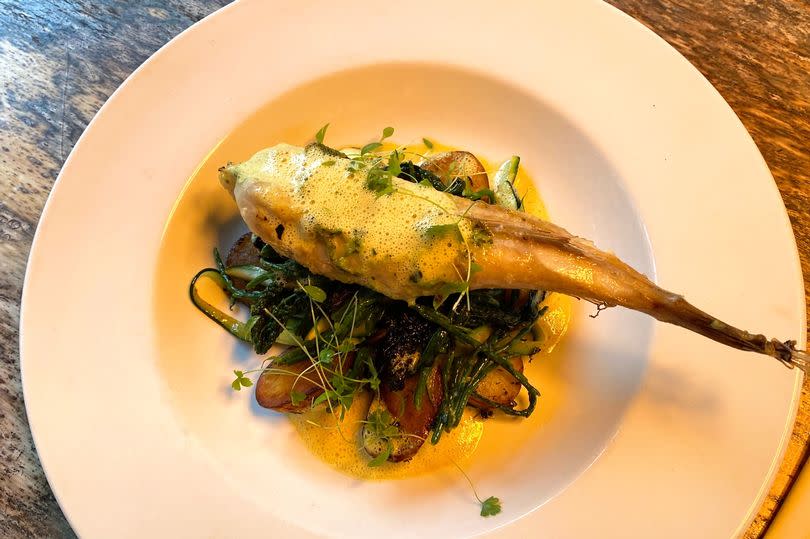
Another pub I’d recommend in the area is the White Horse, located in the pretty village of Stogumber, just four miles from our walk. The small, very rural community deserves a good inn, but there have been times when the place looked likely to become pub-less.
And that, of course, is something you could say about a good many villages located out in the sticks – which is why I like to support pubs in out-of-the-way places. Stogumber’s excellent White Horse recently reopened under new management, and I know the local couple will do a great job – so if you’re in the area enjoying a walk or whatever, do call in.
Part of the point of this series is to promote the idea of genteel adventures in our wonderful landscapes – and it doesn’t get much better than a nice scenic stroll on the Quantocks, followed by a delicious lunch or early evening meal in one of the superb pubs to be found on your journey.
Five other West Country eminences which give you that 'closer to heaven' feeling
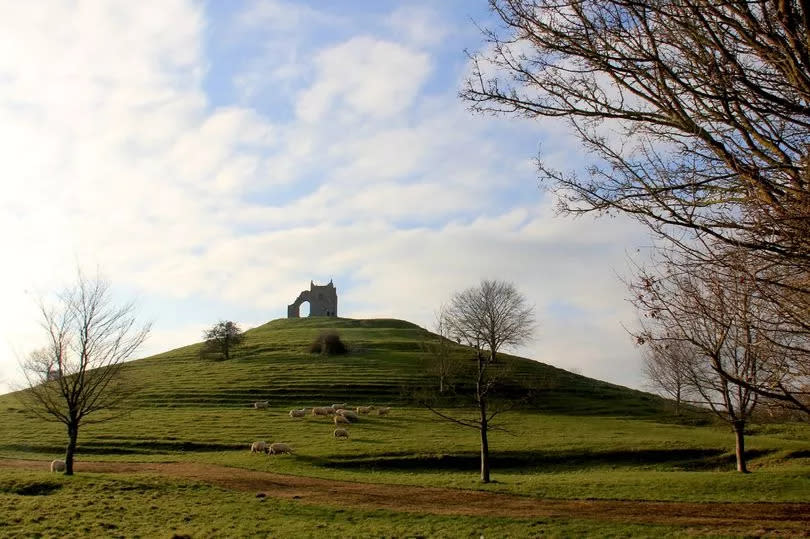
Burrow Mump: Hills don’t have to be mountains to make you feel very high indeed – Burrow Bump, which looms above the hamlet of Burrowbridge in the heart of the Somerset Levels, only rises 80 feet from the plain, but will give you views second to none.
The Malverns: Arguably the most famous ridge in the greater region, offers vast panoramas in every direction, especially if you walk the 10-mile trail from one end to the other, which takes in the highest summit of nearly 1,400 feet.
Godolphin Hill: Down in West Cornwall, this eminence does a similar job – despite only rising just over 500 feet above sea-level, that’s enough to show you a massive slice of the far west.
Lewesdon Hill: At 915 feet, this is the highest point in Dorset, and well-worth a visit. Not many climb this out-of-the-way eminence, but you are rewarded with stunning views of the Westcountry’s heartlands if you do.
Dunkery Beacon: Relative giant at 1,703 feet. What makes this hill so remarkable is that it’s only a couple of miles from the sea, so you really do feel on top of the world. On a clear day you’ll see no fewer than 15 different counties from the cairn at the top, and may even spy the sparkle of the English Channel 50 miles to the south.

 Yahoo News
Yahoo News 
